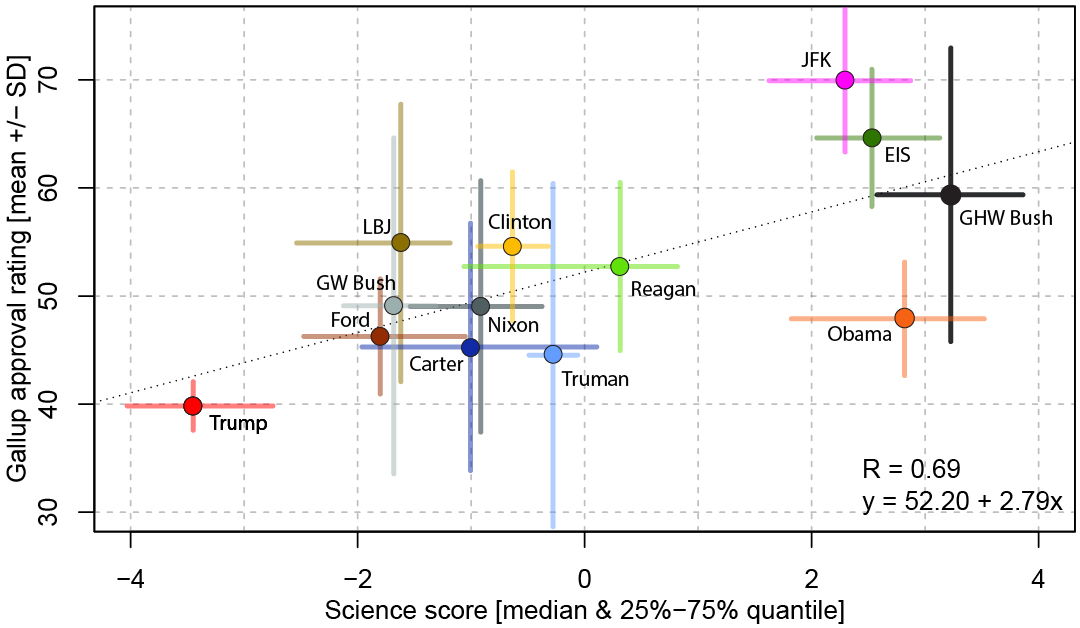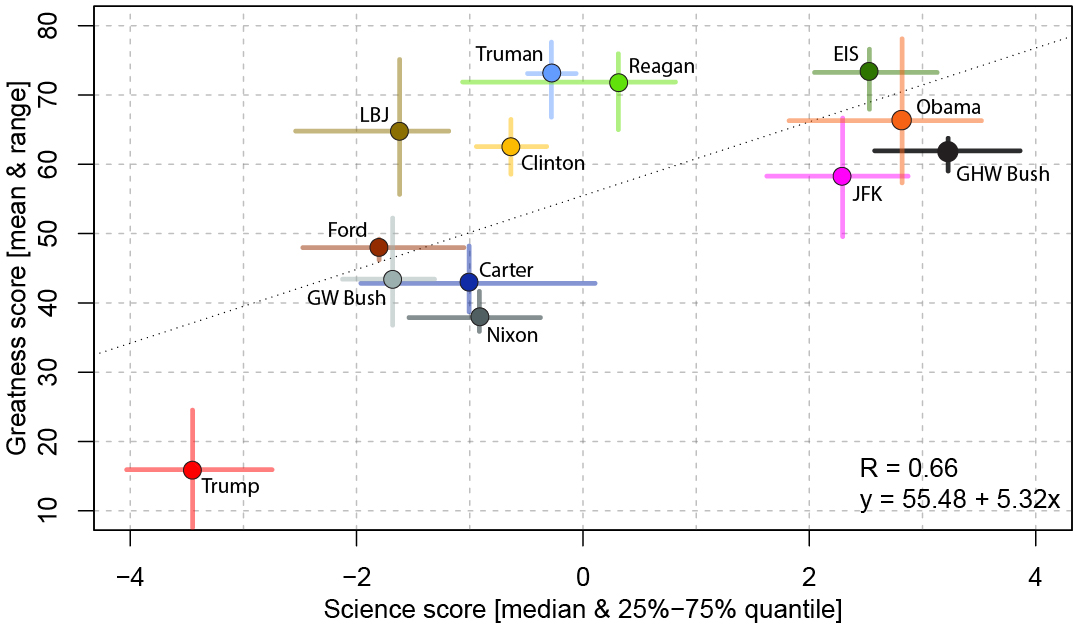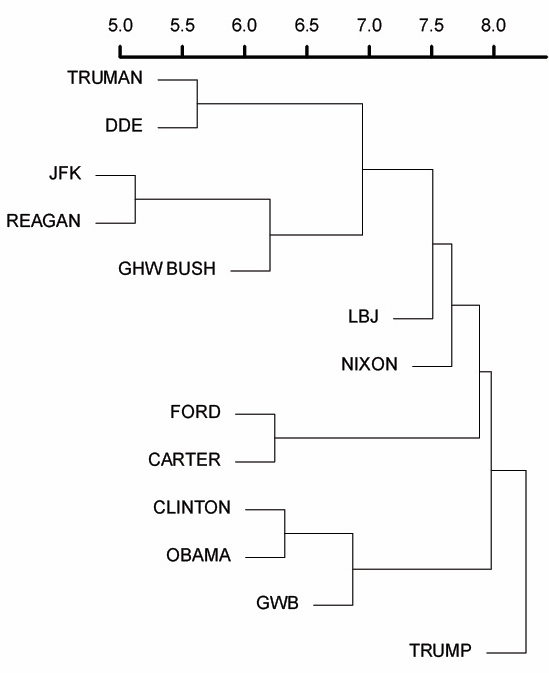
Sciences & Technology
Dengue-blocking bacteria endure the heat

An analysis of the words and actions of past and present US Presidents confirms Donald Trump’s hostility to science, and suggests it may hurt him politically
Published 29 January 2020
Is Donald Trump at war with science?
Repeated attempts to reduce funding for science agencies, unprecedented delays in appointment of science advisors, reductions in staff at federal science agencies, and an ever-growing list of adversarial rhetoric and actions suggest that he is.
Although the US Congress has largely saved science organisations from funding cuts, it has been proposed that Trump’s systematic efforts to downplay scientific activity, expertise and scientific data may lead to irrational policies and decisions.
For a nation founded on the basis of a science of politics, this would be ironic if it were not so distressing.

But how does the current administration’s attitude towards science compare with that of its predecessors? Is Trump really such an outlier?
A variety of methods exist for interrogating this question.

Sciences & Technology
Dengue-blocking bacteria endure the heat
Interviews with science advisors to past presidents provide mostly anecdotal evidence for an inseparable collision of science and politics, with presidential behaviours ranging from paradoxical to ambivalent, from supportive to denialist.
Funding for major scientific agencies in the US (e.g. NASA) are fought out between the president and congress.
This relationship and the resulting budgets, are often driven by political factors (e.g. the partisan balance within the congress), clouding our vision for how well science funding tracks presidential priorities.
To examine this question from a different perspective, we undertook a quantitative analysis of US presidential rhetoric about science using two standardised major communications: the annual State of the Union (SOTU) address and the President’s Budget Message (PBM) from 1947 to 2019, representing every president since Harry S. Truman, who became president in 1945.

We used computer scripts to count the frequency of usage of 30 different keywords and their derivatives from 144 individual transcripts sourced from the Presidency Project.
We then used statistical techniques to investigate statistical groupings amongst keywords and presidents.

We also developed a science advocacy score (Figures 3 and 4 below) for each president that addresses three elements: language, funding and actions.
The language element is based on the use of science related keywords, like ‘research’, ‘health’ and ‘climate change’.
The funding score reflects changes in the proportions of funding going to research and development and funding for the Office of Science and Technology Policy. Presidential action scores are based on a variety of factors related to establishing, abolishing or continuing science-related initiatives.

The science advocacy score was calculated with a random sampling approach, including each of the components of each metric to avoid over-reliance on any one component as the best proxy indicator of presidential science advocacy.
For example, increased funding for a science agency may not reflect a president’s budget proposal, but rather a decision by Congress to oppose a president’s proposed science funding cuts.
Finally, we compared science advocacy scores with two independent measures for political popularity: Gallup Presidential Approval Ratings and US Presidential Greatness Scores.
Our results (Figures 3 and 4 below) indicate a positive statistical relationship between science advocacy and political popularity among US Presidents.
This correlation is surprising, but what does it tell us about causality?


When we listen to people speaking – a presidential address, for example – we commonly use heuristics (mental short-cuts) to form rapid judgements about the speaker and their message. So, our evaluations are susceptible to cognitive biases, such as confirmation and belief bias.
For example, while we might consider the rhetorical styles of Trump and Obama to be extremely different based on our judgements of their manners and body language, computerised content analysis of their speeches indicates these two presidents are remarkably similar (and unlike their predecessors) in terms of their self-reference and tenacity.

Sciences & Technology
Governments must support science, not self-interest
The language time-series (Figure 1 above) reflects the emergence and dissipation of major US societal issues and presidential priorities (e.g. George W. Bush’s War on Terror, Obama’s focus on business and jobs following the global financial crisis, Reagan’s tax reforms, Eisenhower’s military priorities).
The most frequent users of science-related keywords are Eisenhower, Kennedy, Clinton and Obama (Figure 2 above). While Ford, Bush Jr and Trump are the least frequent users of these keywords.
Trump’s SOTU addresses are the most linguistically different to his predecessors, as illustrated by the cluster tree (Figure 5 below).

Much has been made about Trump’s unpopularity and his ‘war on science’.
In our analysis, Trump has the lowest popularity and the lowest science advocacy score. The most popular presidents (Eisenhower, Kennedy, Bush Sr and Obama; the latter by greatness score only) have the highest science advocacy scores, and a positive trend amongst these variables is evident in this analysis.
This relationship doesn’t imply causality. There are many reasons why this relationship might exist.
Some presidents were in office during what has been called the ‘Golden Age of Science’ (following World War II), when scientists ascended to high levels of power, stimulated by militaristic applications and the Space Race, and science agencies were newly established and funded.

Arts & Culture
I don’t think that word means what you think it means
A president simply reflecting the prevailing societal issues of that time, rather than having a personal pro-science agenda, might be captured as a science advocate in our data.
Similarly, if the utility of science in tackling prevailing challenges is unclear or unrecognised, even a pro-science president (like Carter) might not use science keywords frequently.
Nonetheless, this relationship is intriguing.
Superimposed upon a legacy of scientists-turned-successful-leaders, it is possible that science skills and advocacy might add subtle benefits to the complex world of modern democracies.
Presidents confident in their advocacy of science tend to be more popular than those that afford it limited space.
Trump is not ambivalent about science. Rather, he has developed an anti-science rhetoric and agenda that may be detrimental to his political popularity.
The computer scripts used to collect data in this project and the detailed calculation of science advocacy scores can be made available by contacting Dr Mark Quigley.
Banner Image: US President Donald Trump arrives to deliver the State of the Union address/Getty Images